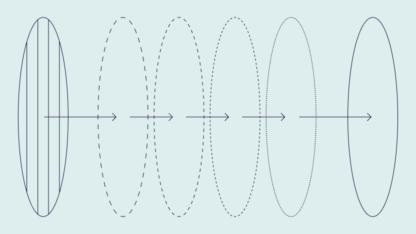What Are Defaulting Customers?
Defaulting customers are those who fail to make an agreed payment on a debt. The customer could be an individual, a business, a local or regional authority, or even an entire country. The debt could be in the form of either secured or unsecured borrowing. Defaulting customers can also include those who receive goods and services but are then unable to pay for them.
Common examples of defaulting customers include those who fail to make agreed payments for credit card bills, loans, and mortgages. In the US, for example, the overall mortgage delinquency rate stood at 3.45% as of Q3 2022. In the UK, meanwhile, figures from Atradius show that businesses are writing off £8 of every £100 they bill as being uncollectable due to non-payment.
Why Do Customers Default?
Customers default for a wide range of reasons. In the simplest terms, defaulting is usually due to an inability to pay. However, there can be other reasons, such as a customer protesting poor service by refusing to pay, despite being able to afford the payment. Often times a great way to spot this is to use user activity monitoring software to prevent this from further happening.
Reasons That Individual Customers Default
Common reasons that individual customers default include financial insecurity resulting from:
- job loss
- rising cost of living
- unexpected expenses (such as becoming a parent or having to care for an elderly relative)
- changes to circumstances (ranging from divorce to moving house)
- inability to work due to ill health
Regardless of whether a customer is unable or unwilling to fulfill a payment, the business must digest their non-payment status into their returns.
Use our powerful machine learning tools to discover bad actors early and protect your bottom line.
Read More
Reasons That Business Customers Default
Businesses may default on payments for a range of reasons. These include being unable to pay due to the following:
- business failure
- temporary cash flow fluctuations
- supply chain disruption
- commodity price fluctuations
- regulatory fines/penalties
- loss of funds due to fraud/cybercrime
- spiraling material and shipping costs
When an entire organization defaults on a payment, it is usually indicative of metacontextual forces – partnered businesses should be aware of changing economic situations.
What Happens When You Default on a Payment?
When a customer defaults on a payment, there are usually financial consequences in the form of penalties and/or interest, which the lender applies. The customer may also have problems accessing credit in the future. Business customers who default may also suffer reputational damage if knowledge of the situation becomes public.
Defaulting on a payment will trigger one of a range of processes, depending on the type of borrowing it relates to, the parties involved, and the terms that were agreed to when the money was borrowed, or the goods or services provided. Some common examples are below.
| Reminder letters | The creditor may send letters to remind the debtor that the payment is due. |
| Default notice | The creditor may send a default notice. This is a letter that warns the customer they are about to default and gives two weeks (sometimes longer) to catch up with the overdue payment. It is usually sent after payments have been missed for between three and six months. (The specifics here relate to default notices covered by the Consumer Credit Act in the UK – different countries will have their own versions of this legislation.) |
| Late payment fee | The creditor may charge a fee to the debtor to cover the administration associated with the default. |
| Application of interest | The lender may charge interest (or additional interest) on the money owed. |
| Full repayment | The creditor may ask for full repayment of the debt instead of the previously agreed installments. |
| Recovery of goods | For debts relating to goods (cars, properties, furniture, electronic items, and so on), the debtor may be required to return the goods to the creditor in place of payment. |
| Debt collection | Unpaid debts may be passed on to a debt collection agency, which will attempt to recover the missed payments, along with a range of fees, penalties, and interest charges. |
| Legal proceedings | The creditor may initiate legal proceedings in an attempt to recover funds from the defaulting customer. |
In addition to dealing with the above, defaulting customers are also likely to find it harder to get credit in the future.
Types of Defaulting Customers
There are different types of defaulting customers. They include those defaulting on secured debt and unsecured debt. Some willful defaulters borrowed money or obtained goods fraudulently without the intention of meeting their repayment obligations.
Secured Debt
Secured debt is secured on something, such as a car, a home, or a company’s assets. When a customer defaults on a secured debt, they are likely to face the reclaiming of the security by the lender.
Unsecured Debt
Unsecured debt is debt that is not secured on anything. Examples include credit card debt, store credit, and many types of personal loans.
Willful Defaulters
Willful defaulters are those who borrow money or order goods and services but do not plan to meet their repayment obligations. Willful defaulting is a form of friendly fraud. Examples include individuals who take out loans with no intention of repaying them and businesses that order goods with no intention of paying for them after delivery.
Why Are Defaulting Customers an Important Issue?
Defaulting customers is an essential issue because it can end up costing both the creditor and the debtor time and money. The impact of defaulting on a payment can also be incredibly stressful, whether the customer is an individual or a business.
It is also important for creditors to understand and monitor their default rates as part of their fraud prevention tools. They can do this by predicting customer defaults, analyzing historic data, and monitoring current trends.
Partner with SEON to reduce fraud rates in your business with real-time data enrichment, whitebox machine learning, and advanced APIs.
Ask an Expert
How to Protect Against Defaulting Customers
High proportions of defaulting customers can harm a lender and cause them financial difficulties. Lenders can guard against this in several ways.
| Robust credit checking processes | Undertaking detailed checks before underwriting a loan is essential. Credit checking processes vary from country to country but usually cover a range of financial metrics along with other considerations (such as time spent at the most recent address). |
| Solid anti-fraud processes | Compliance with Know Your Customer and Know Your Business obligations can help guard against fraudulent borrowing, as well as ensure that lenders carry out due diligence in terms of anti-money laundering legislation. |
| Use of guarantors | Customers considered to be at a higher risk of defaulting may be asked to provide a guarantor – someone who agrees that they will make the payment in lieu of the customer, should the customer default. |
| Fees and interest | Lenders can charge all customers fees and interest rates that are sufficient to cover any anticipated losses from defaulting customers. |
| Credit insurance | Businesses can take out insurance that protects them against the risk of customers not paying for goods they have received. |
Businesses can also protect themselves from defaulting customers using tools specific to their industry. Online loan companies, for example, can use software to help curb loan fraud, both to identify potential bad actors and mitigate defaulting customers preemptively.







